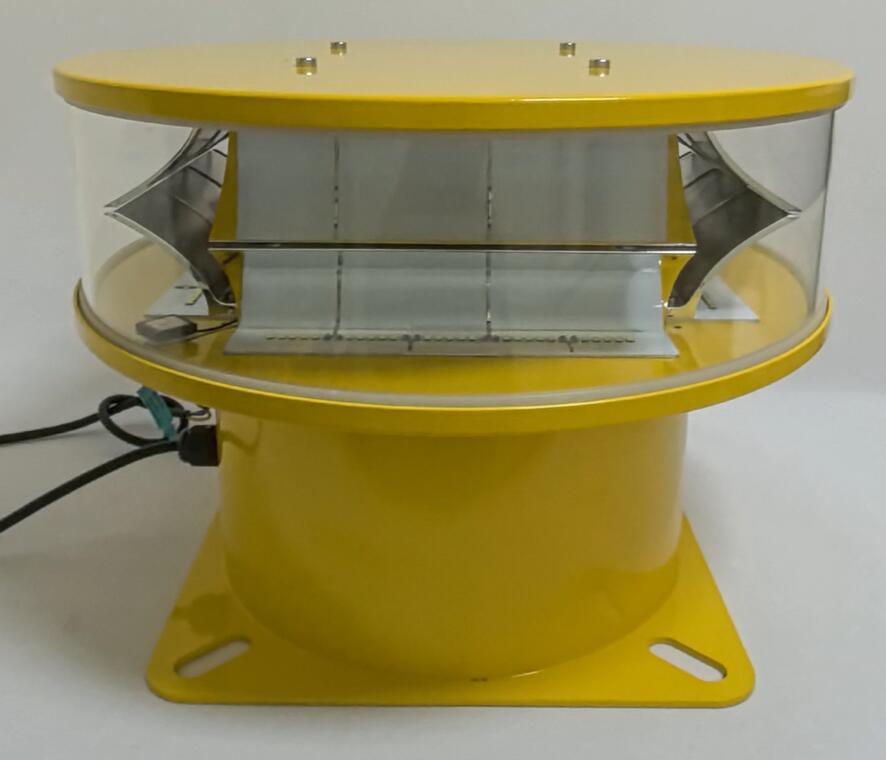The Essential Role of Obstruction Lights in Aviation Safety
Obstruction lights are critical components of aviation safety, ensuring that tall structures such as towers, wind turbines, and buildings are visible to pilots, especially during low-visibility conditions. These lights help prevent collisions by marking potential hazards, making them indispensable in modern air navigation. This article explores the types, regulations, and technological advancements in obstruction lighting systems.
Types of Obstruction Lights
Obstruction lights are categorized based on their intensity and purpose:
Low-Intensity Obstruction Lights (L-810) – Used for structures under 45 meters (148 feet) in height. These steady-burning red lights are sufficient for shorter obstacles.
Medium-Intensity Obstruction Lights (L-864/L-865) – Employed for structures between 45 and 150 meters (492 feet). They can be red (L-864) or white (L-865) and may flash to enhance visibility.
High-Intensity Obstruction Lights (L-856/L-857) – Required for structures exceeding 150 meters, such as skyscrapers and telecommunication towers. These bright white flashing lights ensure maximum visibility from long distances.

Regulations and Standards
Aviation authorities worldwide, including the FAA (Federal Aviation Administration) and ICAO (International Civil Aviation Organization), mandate the use of obstruction lights. Key regulations include:
FAA Advisory Circular 70/7460-1L – Specifies lighting requirements based on structure height and location.
| Obstruction Lights |
ICAO Annex 14 – Provides international standards for obstruction lighting to ensure uniformity across countries.
IEC 61400-24 – Focuses on wind turbine lighting to minimize aviation risks.
Compliance with these standards ensures that obstruction lights function effectively without causing light pollution or interference with aircraft navigation systems.
| Obstruction Light |
Technological Advancements
Modern obstruction lighting systems incorporate advanced technologies to improve efficiency and reliability:
LED Obstruction Lights – Energy-efficient and long-lasting, LED lights have replaced traditional incandescent bulbs, reducing maintenance costs.
Automatic Monitoring Systems – Sensors detect failures and alert maintenance teams, ensuring continuous operation.
Dual-Lighting Systems – Some structures use both red and white lights for enhanced visibility in varying weather conditions.
Aircraft Detection Lighting Systems (ADLS) – Smart systems activate obstruction lights only when aircraft are nearby, reducing light pollution.
Challenges and Future Trends
Despite their importance, obstruction lights face challenges such as:
Light Pollution – Excessive brightness can disturb wildlife and nearby communities.
Maintenance Difficulties – High structures require specialized equipment for light servicing.
Weather Resistance – Harsh conditions can affect light performance.
Future trends include solar-powered obstruction lights, adaptive brightness control, and AI-based monitoring to further enhance aviation safety.
Obstruction lights play a vital role in preventing aerial collisions by marking hazardous structures. With evolving regulations and technological advancements, these systems continue to improve, ensuring safer skies for pilots and passengers alike. As urbanization and infrastructure growth continue, the demand for efficient obstruction lighting will only increase, reinforcing their significance in aviation safety.
